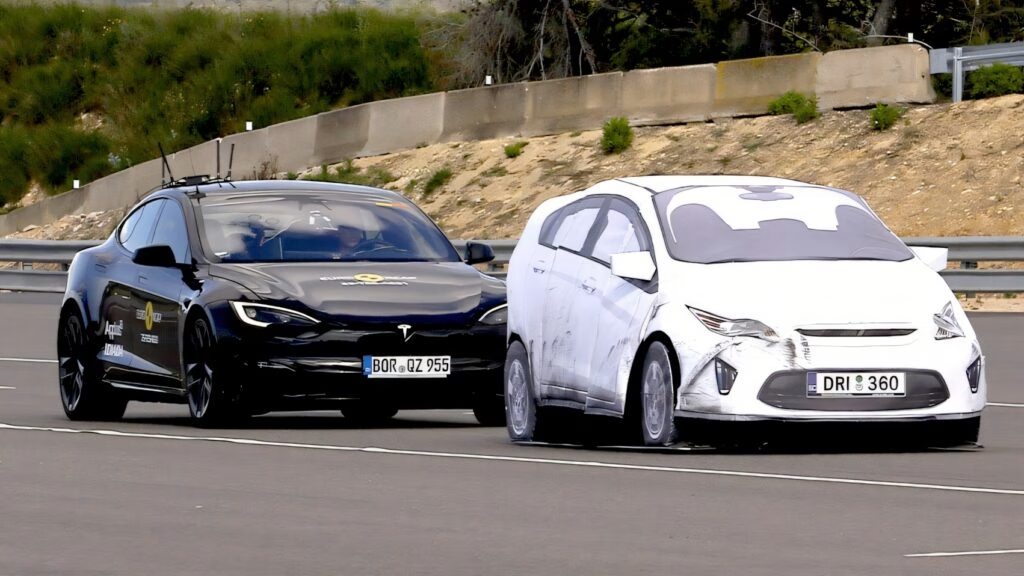Euro NCAP recently released its Assisted Driving test results, shedding light on how various automakers are faring in the realm of advanced driver assistance systems (ADAS). While many drivers dream of a future where they can relax behind the wheel, the reality is that not all systems are created equal. This latest round of evaluations has revealed some surprising insights, particularly regarding the Tesla Model S, which has long been touted as a leader in automotive technology.
How Did Tesla and Others Fare in the Latest Tests?
In a recent evaluation, the Tesla Model S, along with the Volvo EX30 and MG ZS, received a “Moderate” rating. This is particularly noteworthy given Tesla’s strong marketing as a tech-savvy, autonomous-ready vehicle. In contrast, models like the Porsche Macan, Toyota bZ4X, Kia EV3, and Renault 5 achieved a “Very Good” safety rating. This disparity raises questions about the effectiveness and clarity of Tesla’s systems compared to its competitors.
The Euro NCAP’s Assisted Driving Grading program focuses on two main areas: Assistance Competence, which assesses how well the system communicates with the driver, and Safety Backup, which evaluates the vehicle’s ability to perform safety interventions, such as collision avoidance. Tesla’s Model S scored a disappointing 30% in Assistance Competence, while the Kia EV3 and Renault 5, which are more affordable options, scored significantly higher at 74% and 73%, respectively.
What’s Behind Tesla’s Low Score?
Despite achieving a commendable 94% in Safety Backup, the Model S’s overall rating suffered due to its poor performance in Assistance Competence. Euro NCAP pointed out that Tesla’s marketing, particularly the term “Autopilot,” may mislead consumers about the system’s actual capabilities. This can lead drivers to overestimate how autonomous the vehicle truly is, potentially compromising safety.
Euro NCAP emphasized that a well-designed system should effectively communicate with the driver, informing them about the level of assistance available. In Tesla’s case, the system’s resistance to driver override and its tendency to disengage when overridden were also flagged as significant issues. This raises concerns about how intuitive and user-friendly the system is in real-world driving scenarios.
What About Other Brands?
The Volvo EX30, which also received a “Moderate” rating, scored 72% for Safety Backup and 62% for Assistance Competence. Testers noted that drivers often had to divert their attention to check alerts on the central touchscreen, which can detract from safe driving practices. Similarly, the MG ZS landed in the “Moderate” category, while the Mazda CX-80 and the Chinese XPeng G9 performed better, achieving “Good” ratings.
On the brighter side, the Porsche Macan stood out with an impressive 92% in Safety Backup and 85% in Assistance Competence. Euro NCAP praised its clear status displays and transparent promotional materials, highlighting how effective communication can enhance driver confidence and safety.
What Can We Learn from These Results?
These findings underscore the importance of clear communication between vehicles and their drivers. Adriano Palao, ADAS Technical Manager at Euro NCAP, pointed out that consumers must understand their role as drivers and be aware of the limitations of assisted driving systems. A well-designed system should not only cooperate with the driver but also provide adequate information to prevent misunderstandings that could lead to accidents.
As we look to the future of driving, it’s clear that the path to fully autonomous vehicles is still fraught with challenges. The big takeaway? Advanced driver assistance isn’t just about flashy technology; it’s about making sure drivers are informed and empowered to make safe decisions on the road. So, if you’re considering a new vehicle with these features, take the time to research and understand how well these systems communicate and function in practice. Start with one change this week, and you’ll likely spot the difference by month’s end.

